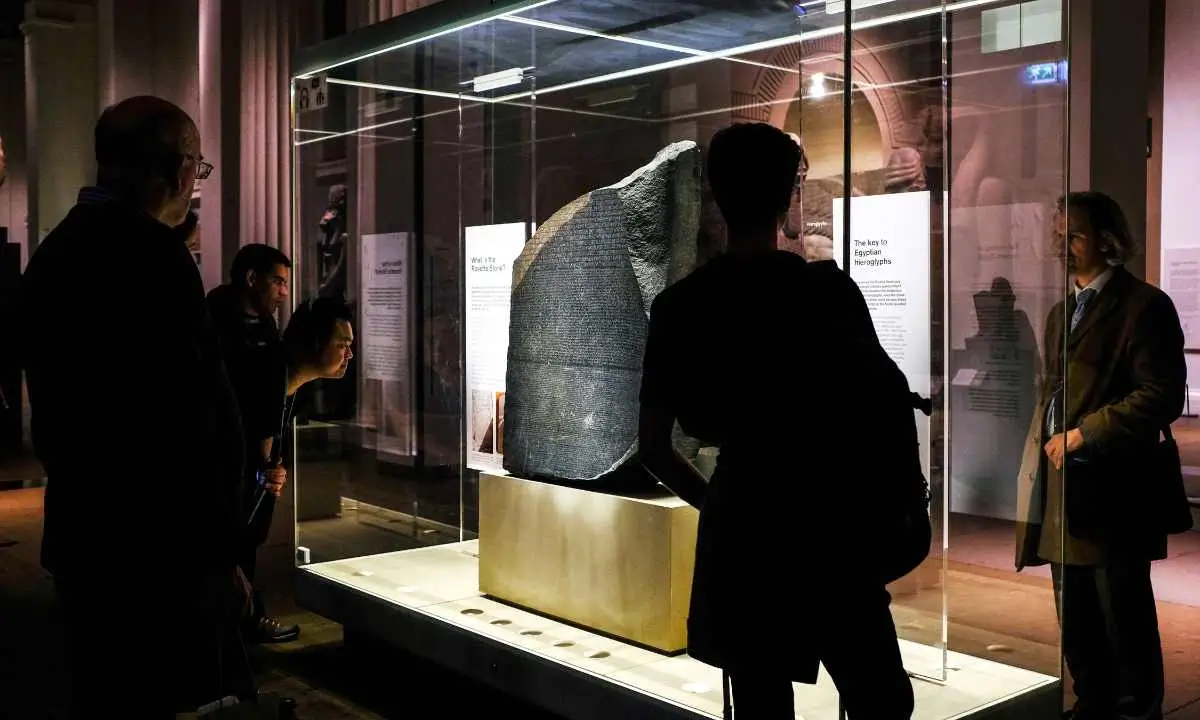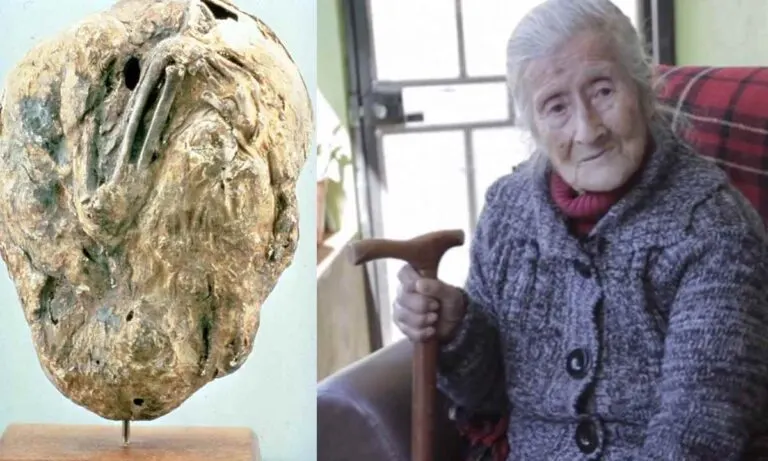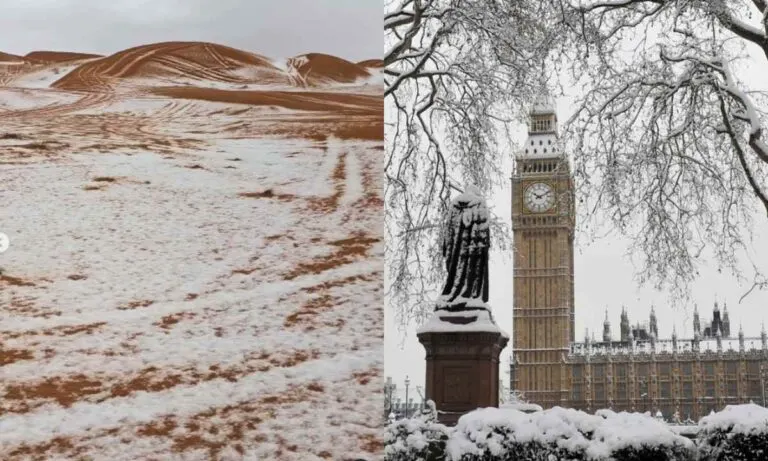The Most Visited Object at the British Museum | The Rosetta Stone Unlocks Egypt’s Mysteries!
Nearly 4 million visitors came to the British Museum in 2022. However, the most sought-after artifact by these visitors is the ‘Rosetta Stone.’ Napoleon’s Grande Armee unearthed this basalt slab in their failed Egyptian Campaign in 1799. But it has significance beyond a mere ancient artifact. After 4 century AD no one could read ancient Egyptian hieroglyphics or the language of Paraohs. For centuries Arabs, Europeans, and many others tried to decipher ancient Egyptian language.
But there was no luck and Egyptian secrets remained elusive for centuries. However, the discovery of Rosetta Stone changed that. Its inscription, which features three scripts—Greek, Demotic, and Hieroglyphic—made it possible for scholars to decode the language of the pharaohs finally. Let’s have a look at the details.
Discovery and Historical Significance
French soldiers discovered the Rosetta Stone in 1799 in the Egyptian town of Rosetta (modern-day Rashid), during Napoleon Bonaparte‘s campaign in Egypt. While constructing fortifications, the soldiers stumbled upon a stone with inscriptions in three distinct scripts. It measured about 44 inches tall and 30 inches wide.
This discovery soon found its way to scholars who realized that the stone could be the key to deciphering ancient Egyptian hieroglyphs, a writing system that had long baffled historians. At the time, no one could read hieroglyphs, and Egypt’s rich past remained largely mysterious.

The significance of the stone lay in its trilingual inscription. It contains a decree issued in 196 BCE by Ptolemy V, a young pharaoh of Egypt, and is written in Greek, Demotic (a simplified form of Egyptian script), and Hieroglyphics. It showed the support of the priests to the king. However, later the archeologists found that it was just one copy of many similar stones that the king disbursed throughout the kingdom.
Greek was a well-understood language, and scholars hypothesized that the three texts on the stone were essentially the same decree. This provided a bilingual key to unlock the long-lost language of the hieroglyphs.

How the Rosetta Stone Came to the British Museum
The journey of the Rosetta Stone from its discovery to its home in the British Museum is a tale of war, diplomacy, and power. After its discovery by the French, it was briefly studied by Napoleon’s scholars. However, following the defeat of Napoleon’s forces by the British in Egypt in 1801, the stone was claimed by the British under the terms of the Treaty of Alexandria. Along with other antiquities collected by the French, the Rosetta Stone was taken to London.

It arrived in Britain in 1802 and was presented to King George III, who donated it to the British Museum. Since then, it has remained one of the museum’s most iconic artifacts. Although it has left the museum only twice in its history (once during World War I when it was stored underground for safekeeping), the stone has been on near-permanent display, drawing millions of visitors from across the globe.
The Race to Decipher the Stone
Deciphering the Rosetta Stone became an intellectual competition among European scholars. In the early 19th century, British and French linguists took on the task. British scientist Thomas Young, who began studying the Rosetta Stone’s texts in 1814, made some initial progress in analyzing its hieroglyphic inscription. Young found that the cartouches—hieroglyphs enclosed in ovals—contained the phonetic spellings of royal names, including Ptolemy, referenced in the Greek inscription.

However, French linguist Jean-Francois Champollion deciphered the Rosetta Stone and cracked the hieroglyphic code. He used his intimate knowledge of the Coptic language which is related to ancient Egyptian language as well. Between 1822 and 1824, Champollion showed that hieroglyphics were a combination of phonetic and ideographic signs rather than just symbolic picture writing that didn’t also represent sounds of language, as earlier scholars had suspected.
Champollion’s discovery marked the birth of modern Egyptology, opening up the possibility of reading and interpreting vast amounts of ancient Egyptian literature. His findings helped establish a foundation for the study of one of the world’s oldest and most influential civilizations. By the mid-19th century, Egyptology had gained recognition as a legitimate academic field, and the Rosetta Stone was heralded as its cornerstone.

The Cultural Controversy
Though the Rosetta Stone is celebrated as an archaeological triumph, its presence in the British Museum is not without controversy. Egypt has long called for the stone’s repatriation, arguing that it is a vital part of their cultural heritage. This request reflects broader concerns over the ownership and repatriation of ancient artifacts taken from colonized regions during European imperialism.
The British Museum has, thus far, declined these requests, citing the importance of the stone as part of world heritage and its role in the advancement of Egyptology. Nevertheless, the debate continues, with Egyptian authorities, including the former Minister of Antiquities, Zahi Hawass, repeatedly raising the issue. The Rosetta Stone remains a symbol not only of historical discovery but also of the complex relationships between modern nations and their colonial past.
Why the Rosetta Stone is the Most Visited Object
The Rosetta Stone brings millions of visitors to the British Museum for its key role in unlocking ancient Egypt’s language. It was this stone that allowed scholars to finally decode hieroglyphs, opening the way to understanding a civilization long shrouded in mystery. The stone’s three scripts—Greek, Demotic, and Hieroglyphs—enabled Jean-François Champollion to break through centuries of failed attempts to read the ancient writing. For visitors, seeing this artifact connects them to the moment when history’s secrets began to reveal themselves.
The stone’s impact goes beyond language. Its decipherment revolutionized the study of Egypt. Scholars could finally read inscriptions on tombs and monuments, discovering details about Egypt’s rulers, beliefs, and daily life. Egypt’s past, once hidden, became accessible. This changed how history was studied, and Egyptology emerged as a field of deep inquiry.
For visitors, the Rosetta Stone represents discovery. Its story, from its unexpected finding, and its role in opening up ancient Egypt, keeps drawing people. The stone stands as a reminder that even the hardest puzzles can be solved. It connects the past with the present in a way few objects can.
Conclusion
The Rosetta Stone, more than any other artifact in the British Museum, symbolizes the pursuit of knowledge and the power of human ingenuity. Its discovery was a turning point in our understanding of ancient Egypt, and its decipherment was a triumph of scholarly effort. As the most visited object in the museum, it continues to captivate millions of people from around the world, offering a glimpse into a civilization that has shaped much of human history.
Also Read
The Sahara Desert Filled With Water After 50 Years!
Why Honey Never Spoils | Archaeologists Found 3000-Year-old Honey Pots That Are Still Edible!







